Q
What is the best fuel for a Subaru Crosstrek?
For Subaru Crosstrek owners in Malaysia, the best fuel choices are RON 95 or RON 97 unleaded gasoline, depending on the vehicle's engine model and official recommendations. The Subaru Crosstrek usually comes with a horizontally - opposed engine. This type of engine has certain requirements for fuel quality. RON 95 can meet the needs of daily driving. However, if you're after better performance and engine protection, you can opt for RON 97. Its higher octane rating can better suppress engine knocking, making it especially suitable for aggressive driving or in high - temperature environments.
The overall fuel quality in Malaysia is reliable. Owners just need to choose according to their budget and driving habits. But they must avoid using fuel with a rating lower than RON 95, as it may shorten the engine's lifespan. Additionally, regularly using the fuel additives recommended by the original manufacturer helps keep the fuel system clean, especially for direct - injection engines.
It's worth noting that Crosstreks from different years may have slightly different fuel requirements. It is recommended that owners refer to the vehicle manual or consult an authorized Subaru dealer in Malaysia for the most accurate advice.
Special Disclaimer: This content is published by users and does not represent the views or position of PCauto.
Related Q&A
Q
How often do you need to replace tires on a Subaru Crosstrek?
Regarding the recommendation on the tire replacement frequency for the Subaru Crosstrek, it mainly depends on the tire wear, driving habits, and the road conditions in Malaysia. Generally speaking, the service life of tires is about 50,000 to 80,000 kilometers or around 5 years, but the specific replacement time should be determined according to the actual wear. The rainy and humid climate in Malaysia and the frequent starting and stopping on urban roads will accelerate tire wear. It is recommended that car owners check the tire tread depth (the legal minimum depth is 1.6 millimeters) every 10,000 kilometers and pay attention to whether there are cracks or bulges on the tire sidewalls. If you often drive on gravel roads or take long - distance highway trips, you may consider replacing the tires earlier.
Subaru's Symmetrical All - Wheel Drive system has relatively high requirements for tire matching. It is recommended to replace all four tires at the same time to maintain balanced grip. In addition, choosing tires suitable for the tropical climate (such as models with excellent wet - road performance) can improve driving safety during the rainy season. Regular tire rotation (every 8,000 - 10,000 kilometers) also helps to extend the tire service life.
Q
Does the Subaru Crosstrek have a spare tire?
Yes, the Subaru Crosstrek models sold in the Malaysian market are usually equipped with a full-size spare tire. This is a standard configuration provided by the Subaru brand to ensure that drivers can replace the tire in time when encountering tire problems. The spare tire is usually placed under the trunk, making it convenient for users to use in emergencies. For drivers in Malaysia, a full-size spare tire is particularly important for long-distance driving or in areas with poor road conditions, providing better safety assurance.
In addition, the Subaru Crosstrek is also equipped with a full-time all-wheel-drive system, which further enhances the vehicle's stability and passability on complex road conditions. This is also one of the reasons why many Malaysian consumers choose this car. In daily use, it is recommended to regularly check the tire pressure and condition of the spare tire to ensure that it can be used normally when needed. At the same time, knowing how to replace the spare tire correctly is also a basic skill that every driver should master.
Q
Does the Subaru Crosstrek have folding mirrors?
Yes, some high - end models of the Subaru Crosstrek available in the Malaysian market are equipped with the power - folding rear - view mirror function. This design is very practical in narrow parking spaces or when passing other vehicles, effectively reducing the risk of the rear - view mirrors being scratched. The specific configuration may vary depending on the year and model version. It is recommended to confirm the latest specifications with local authorized dealers before purchasing a car.
Apart from the folding function, the rear - view mirrors of Subaru models usually also integrate functions such as heating for defogging and power adjustment. These details reflect the brand's consideration for practicality. It's worth mentioning that the rear - view mirror folding function is particularly useful in Malaysia's rainy climate and crowded urban environment. Many Japanese brands like Toyota and Honda also commonly equip similar configurations on their mid - to high - end models.
If your Crosstrek doesn't have this function, you can also achieve it through third - party modification. However, it's necessary to pay attention to choosing accessories that meet the JPJ certification in Malaysia to ensure driving safety.
Q
Does the Subaru Crosstrek have rear control arms?
The rear suspension system of the Subaru Crosstrek features a multi-link independent suspension design. This design indeed includes rear control arms as an important part. They are mainly responsible for connecting the wheels to the vehicle body and controlling the movement trajectory of the wheels, ensuring driving stability and comfort. On the diverse road conditions in Malaysia, this suspension design can effectively absorb road vibrations, providing better handling and riding experience. To expand a bit, the multi-link suspension system is generally more complex and costly than simple suspensions like the torsion beam. However, it can better balance comfort and sportiness, making it suitable for car owners who often drive long distances or enjoy outdoor adventures. Subaru's Symmetrical AWD system paired with this suspension further enhances the vehicle's performance on slippery or rough roads, which is especially useful during the rainy season or on suburban roads in Malaysia. If you're interested in suspension maintenance or upgrades, you can regularly check the wear of the control arm bushings and ball joints, as these are the key components affecting the suspension's lifespan.
Q
Does the Subaru Crosstrek have automatic wipers?
Yes, the Subaru Crosstrek is equipped with an automatic wiper function on some high - end models. This technology is commonly known as the rain - sensing wiper. It detects the intensity of rainfall through sensors on the front windshield and automatically adjusts the wiper speed. This allows drivers not to operate the wipers manually in rainy days, enhancing driving convenience and safety. Given Malaysia's rainy climate, this function is very practical as it can reduce the frequency of drivers being distracted by operating the wipers. It should be noted that the automatic wiper is not a standard feature across all Crosstrek models. The specific configuration needs to be confirmed according to the model year and version. It is recommended to check the official configuration list or consult local dealers before purchasing a car. Besides Subaru, other brands like Toyota and Honda also have similar technologies, but they may have different names. For example, Toyota calls it the "raindrop - sensing wiper". The principles are largely the same, all achieving automatic adjustment through optical or capacitive sensors. Such intelligent features are gradually becoming common in modern cars, especially suitable for use in regions with a tropical rainforest climate like Malaysia.
Q
Does the Subaru Crosstrek have good visibility?
The Subaru Crosstrek has truly received a lot of praise from many car owners for its visibility performance. Its design fully takes into account the visibility needs of drivers. The front windshield is wide and the inclination angle of the A-pillar is reasonable, which reduces visual blind spots. At the same time, the relatively high seat position allows drivers to more easily grasp the road conditions in the front and on the sides. This is especially useful for the changeable urban roads and suburban environments in Malaysia. The design of the rearview mirrors and the rear window also provides a good rear view, which helps improve safety when parking or changing lanes. To expand a bit, a good visibility design can not only boost driving confidence, but also reduce the risks caused by unclear vision when driving in the rainy days that are common in Malaysia. Subaru has always attached great importance to driving safety, and the Crosstrek is also equipped with the EyeSight driver assistance system, which further compensates for the visibility limitations in extreme weather. If you often encounter congested or narrow roads, the visibility advantage of this car will be more obvious. Of course, the actual experience may vary slightly depending on personal height or driving habits. It is recommended to take a test drive at a local dealership to feel it for yourself.
Q
Does the Subaru Crosstrek have front parking sensors?
According to the configuration information of the Subaru Crosstrek in the Malaysian market, this model does not come standard with front parking sensors. However, some high - end versions or vehicles with post - purchase modifications by owners may be equipped with this feature. For Malaysian consumers who value parking assistance functions, it is recommended to directly confirm the specific configuration with the dealer when purchasing a car, or consider choosing to install original factory accessories to ensure compatibility.
In fact, the parking assistance systems commonly found in modern vehicles are divided into two technical routes: sensors and cameras. The former uses ultrasonic waves to detect the distance to obstacles and issue an alarm, while the latter provides visual image assistance. It's worth noting that even without front sensors, the EyeSight driver assistance system, which comes standard across all Subaru Crosstrek models, can still provide collision warning through the front - mounted camera, indirectly enhancing safety during low - speed driving.
If you often face narrow parking situations, you can also consult the authorized service center about the installation plan for an integrated front - and - rear radar system. Such an upgrade usually preserves the integrity of the original vehicle's electronic system. In Malaysia's rainy climate, it's also an important usage habit to regularly clean the surface of the sensors to ensure their sensitivity.
Q
Does the Subaru Crosstrek have a 360 camera?
Based on the current configuration information of the Subaru Crosstrek in the Malaysian market, the 360-degree panoramic camera system is not standard on this model. However, some high - end versions may be equipped with auxiliary driving features such as a rear - view camera and blind - spot monitoring. For consumers who value a panoramic view, they can consider installing a third - party 360 - degree camera system later. But it should be noted that this may affect the original factory warranty terms. In Malaysia's rainy and humid climate, a 360 - degree camera can indeed improve driving safety, especially when driving on narrow roads or parking in rainy days. Currently, some models of Japanese cars in the same class, such as the Toyota Corolla Cross and the Honda HR - V, have started to come with an original 360 - degree camera, which reflects the growing market demand for panoramic imaging technology. It is recommended that potential car buyers directly consult Subaru's authorized dealers in Malaysia for the latest configuration details. At the same time, they can also compare the actual performance of driving assistance systems of different brands to choose the model that best suits their needs. It's worth noting that driving assistance systems are just a supplement to safe driving, and maintaining a focused driving attitude is the core of driving safety.
Q
Does the Subaru Crosstrek have automatic braking?
Yes, the Subaru Crosstrek is equipped with an Automatic Emergency Braking system (AEB for short). This is a core feature of the Subaru EyeSight driver assistance technology suite. It's designed to monitor vehicles or pedestrians ahead through a front - mounted camera. When a potential collision is detected, it automatically applies the brakes to reduce the risk of impact or avoid an accident. This technology is especially useful for the ever - changing city and highway driving conditions in Malaysia.
In addition to AEB, the EyeSight system also includes functions such as adaptive cruise control, lane - keeping assistance, and prevention of accidental accelerator use, which further enhance driving safety. Subaru's EyeSight system has performed excellently in multiple global safety evaluations. For example, it has received a five - star rating from ASEAN NCAP, which proves its reliability.
For Malaysian consumers, this kind of active safety technology can effectively handle common local sudden traffic situations, such as motorcycles cutting in or sudden braking. It should be noted that the system's performance may be affected by weather or visibility, and drivers still need to stay focused. Currently, most Japanese and European models in the same class also offer similar functions, but Subaru's camera - based solution has unique advantages in cost - control and adaptability.
Q
Do Subaru Crosstreks have blind spot monitoring?
Yes, some models of the Subaru Crosstrek are indeed equipped with a Blind Spot Monitoring system (BSM for short). This feature is quite common in the high - end versions in the Malaysian market. For example, models with the EyeSight driver assistance system usually integrate this technology. It uses the rear bumper radar to detect vehicles on the side and rear, and displays warning icons on the rear - view mirror or dashboard to enhance the safety of lane - changing. For Malaysian consumers, this function is especially useful on highways or in congested sections, effectively reducing the risk of accidents caused by blind spots.
It should be noted that there may be differences among Crosstreks of different years and configurations. It is recommended to confirm the specific list of functions with local dealers before purchasing a car. Additionally, blind spot monitoring is usually used in conjunction with Rear Cross - Traffic Alert (RCTA), which further strengthens protection when reversing. Such active safety technologies have become standard features for many brands, like Toyota's TSS or Honda's Honda SENSING. However, the algorithms and sensitivities of each system may vary slightly due to brand - specific tuning.
If budget allows, it is recommended to give priority to models with a complete set of driver assistance functions. After all, the rainy climate and complex road conditions in Malaysia pose higher requirements for driving safety.
Latest Q&A
Q
Is the Hyundai i10 a family car?
The Hyundai i10 is a city-sized compact car. It's mainly suitable for single individuals or small families. Although it has a relatively small body size, its interior space is well-designed. The rear seats can accommodate two adults, and it's relatively comfortable for short - distance trips. However, if you have a large family or need to travel long - distance frequently, you might find the space a bit cramped.
In the Malaysian market, the i10's fuel efficiency and nimble handling make it ideal for urban commuting, especially on the congested roads of Kuala Lumpur. Its compact body makes parking a breeze. Moreover, the maintenance cost of the i10 is low, and spare parts are readily available, which is a great option for families on a budget.
If you need more space, you can consider other Hyundai models like the Grand i10 or Atos. They offer more spacious rear seats and trunks, better meeting the needs of families. Overall, the i10 is more suitable for small families or as a second car for city use, rather than the top choice for long-distance trips with multiple passengers.
Q
Is the Hyundai i10 a hatchback or SUV?
The Hyundai i10 is a typical urban subcompact hatchback, not an SUV. It's highly favored by urban users in Malaysia for its compact and agile body size and excellent fuel efficiency. It's particularly well-suited for narrow roads and crowded parking situations. The i10 features a five-door design, with a body length usually around 3.6 meters. It belongs to the A-segment. It's equipped with small-displacement engines of 1.0L or 1.2L, emphasizing practicality and cost-effectiveness. This type of vehicle is very common in the Malaysian market. For example, the Perodua Axia and Proton Saga also have similar positioning.
Compared with SUVs, hatchbacks generally have a lower chassis, a more stable center of gravity, and more flexible handling. However, they have a smaller ground clearance and cargo space. If you need higher passability or greater cargo-carrying capacity, you can consider small SUVs like the Hyundai Venue.
In Malaysia's hot and rainy climate, the i10's air-conditioning system performs well, and it has good durability. Also, its maintenance costs are relatively low, making it a great choice for young families on a budget or first-time car buyers.
Q
How much does a Mercedes S-Class Coupe cost?
In Malaysia, the price of the Mercedes-Benz S-Class Coupe varies depending on the specific model and configuration, generally ranging from RM 1 million to RM 1.5 million. For example, the entry-level S 560 Coupe starts at around RM 1.2 million, while the high-performance AMG S 63 Coupe may cost over RM 1.5 million. It is advisable to consult local authorized dealers for the latest prices and promotional information.
The Mercedes-Benz S-Class Coupe is renowned for its luxurious interior, advanced technology, and powerful performance. It is equipped with features such as the Magic Body Control suspension system and the latest MBUX infotainment system, offering an ultimate level of comfort and driving experience, which makes it suitable for car owners who pursue high - end quality.
In addition, the prices of imported cars in Malaysia are significantly affected by tariffs and consumption taxes. Therefore, the actual cost of purchasing a car may be higher than in other regions. It is recommended to thoroughly understand the relevant tax policies and after - sales service details before buying a car to ensure the best car - buying experience.
Q
What are the differences between Hyundai i10 and Swift?
The Hyundai i10 and the Suzuki Swift are both popular small cars in the Malaysian market, but there are obvious differences in their design and positioning. The i10 is mainly targeted at urban commuting. It has a compact body (3,670mm in length), which is suitable for narrow roads. It is equipped with a 1.2L naturally aspirated engine (83PS/118Nm) and paired with a 4AT gearbox. It focuses on fuel economy (the official fuel consumption is about 5.1L/100km). The interior is mainly for practicality, and a 7-inch touchscreen comes as standard.
On the other hand, the Swift leans towards a sporty style. It has a slightly longer body (3,840mm). It uses a 1.4L Boosterjet turbo engine (90PS/130Nm) or a 1.2L mild-hybrid system, and is paired with a 6AT or CVT gearbox. It offers more flexible handling, and its fuel consumption is similar (about 4.8L/100km). It comes standard with LED headlights and sports seats. In terms of space, the rear row of the Swift is more spacious, while the i10 has a smaller turning radius. In terms of safety features, the Swift usually comes with more ADAS functions such as lane-keeping assist.
More specifically, choosing the i10 is more suitable for urban users with a limited budget who value cost-effectiveness, while the Swift is suitable for young consumers who pursue driving pleasure. In the hot climate of Malaysia, the air-conditioning efficiency of both cars has been locally adjusted, but the turbo engine of the Swift may experience less power loss in high-altitude areas like Genting Highlands. Both cars meet the engine displacement standard of below 1.5L for road tax incentives, and their maintenance costs are also relatively close.
Q
How often do you need to replace tires on a Subaru Crosstrek?
Regarding the recommendation on the tire replacement frequency for the Subaru Crosstrek, it mainly depends on the tire wear, driving habits, and the road conditions in Malaysia. Generally speaking, the service life of tires is about 50,000 to 80,000 kilometers or around 5 years, but the specific replacement time should be determined according to the actual wear. The rainy and humid climate in Malaysia and the frequent starting and stopping on urban roads will accelerate tire wear. It is recommended that car owners check the tire tread depth (the legal minimum depth is 1.6 millimeters) every 10,000 kilometers and pay attention to whether there are cracks or bulges on the tire sidewalls. If you often drive on gravel roads or take long - distance highway trips, you may consider replacing the tires earlier.
Subaru's Symmetrical All - Wheel Drive system has relatively high requirements for tire matching. It is recommended to replace all four tires at the same time to maintain balanced grip. In addition, choosing tires suitable for the tropical climate (such as models with excellent wet - road performance) can improve driving safety during the rainy season. Regular tire rotation (every 8,000 - 10,000 kilometers) also helps to extend the tire service life.
View MoreRelated News
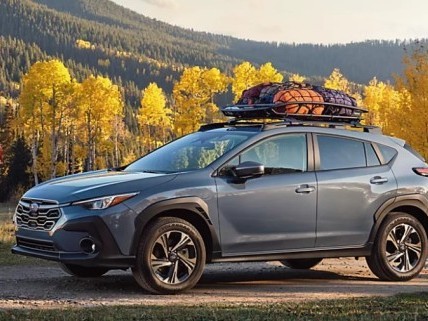
Brand new hybrid system, range over 1000km! New model Subaru Crosstrek coming in December!
RobertOct 22, 2024

Subaru Registers New EV Trademark, Signaling Strategic Shift
Kevin WongAug 8, 2025
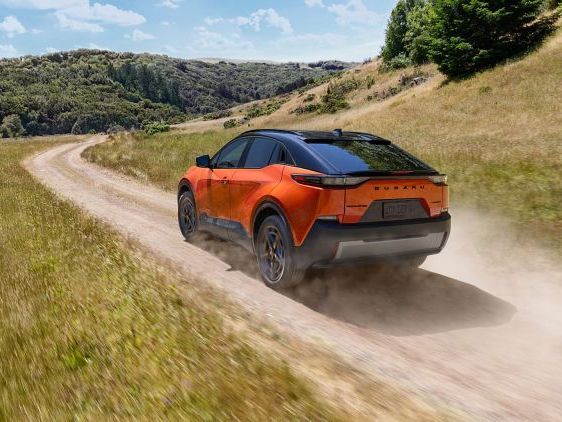
Uncharted is Subaru's first front-wheel-drive car, with a range of up to 482 kilometers.
MichaelJul 18, 2025
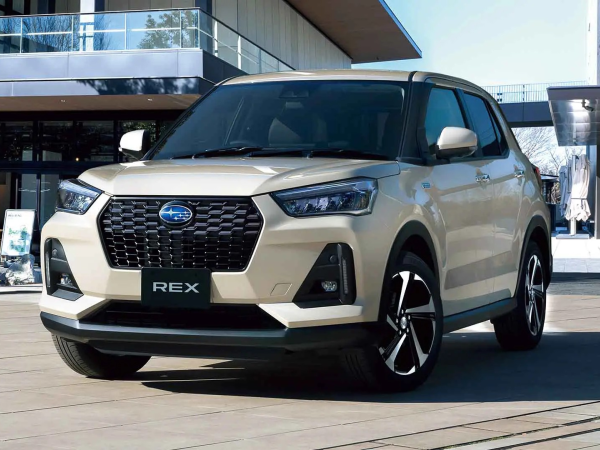
SUBARU REX Hybrid vs Nissan e-POWER: Spot the Difference!
WilliamJun 24, 2025
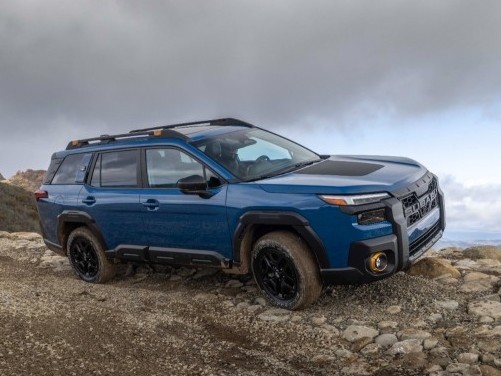
All-New Subaru Outback Debuts with SUV-Inspired Styling
JohnApr 22, 2025
View More

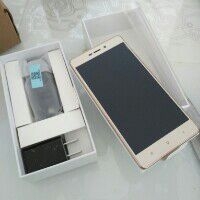

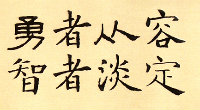

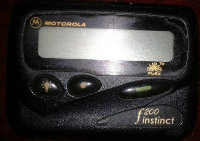











Pros
Cons